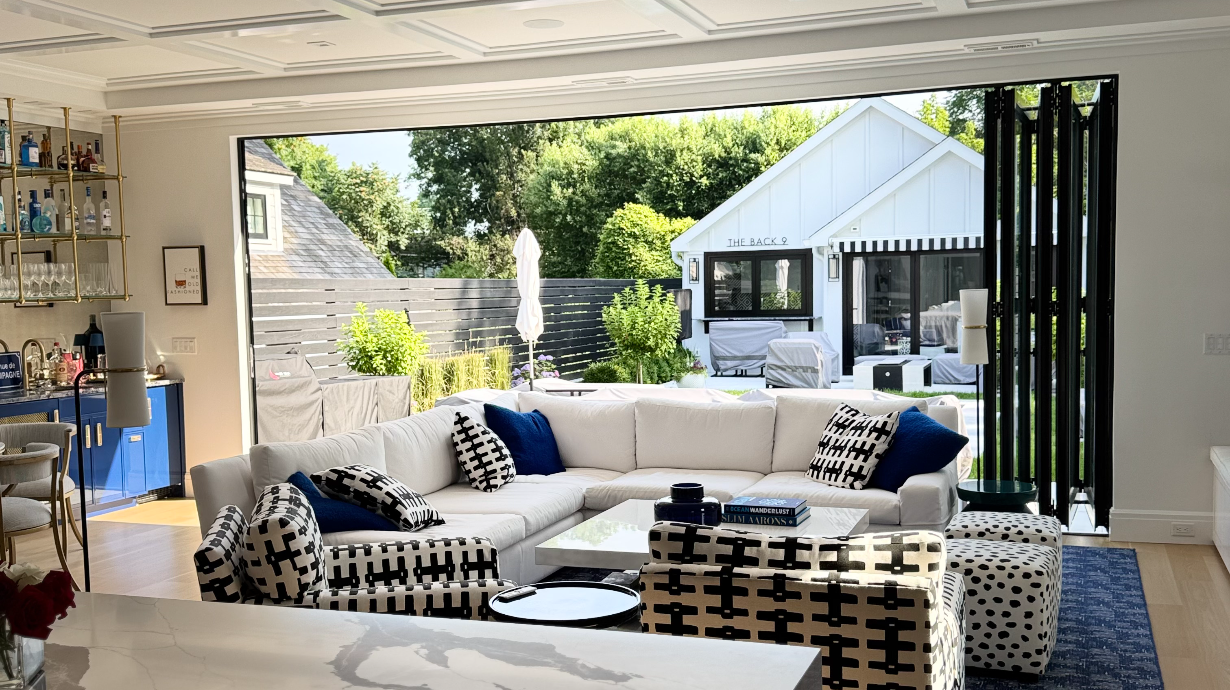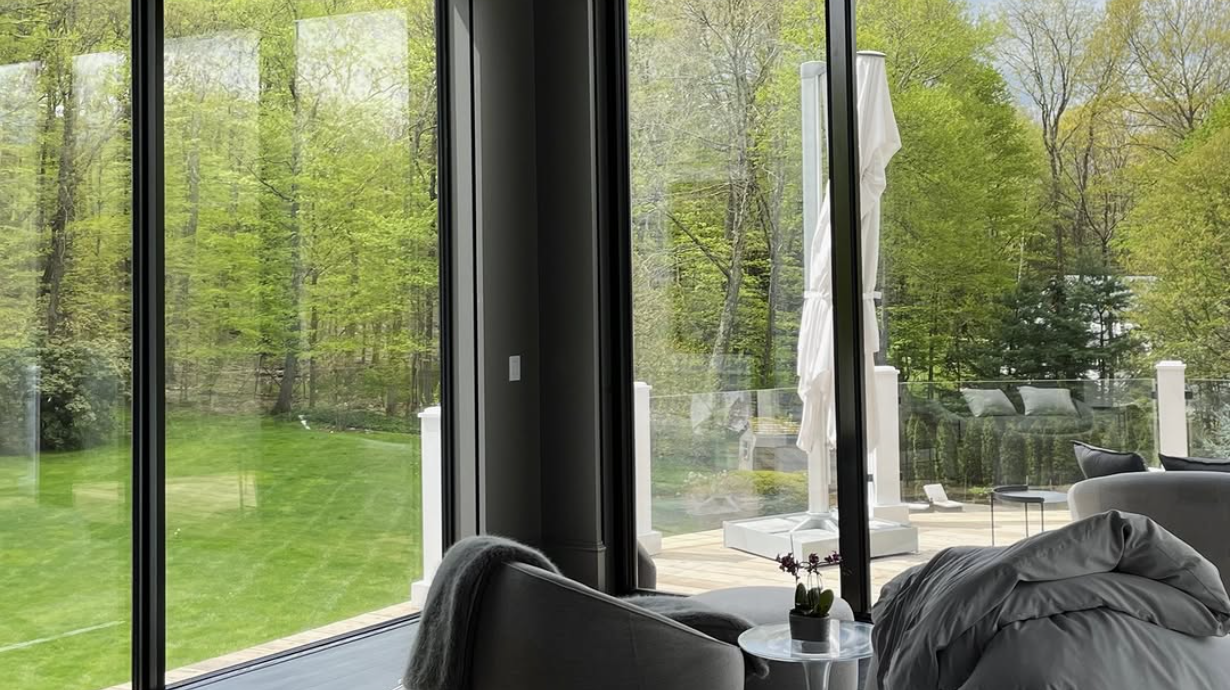When selecting sliding doors for your home or commercial space, understanding the differences between lift-and-slide and traditional sliding systems is crucial for making an informed decision. While both options provide space-saving solutions and seamless indoor-outdoor transitions, their operational mechanisms, performance characteristics, and suitable applications vary significantly. This comprehensive comparison examines the engineering, benefits, and practical considerations of each system to help you choose the optimal sliding door solution.
Modern sliding door technology has evolved to offer sophisticated solutions that address the limitations of traditional systems while providing enhanced performance, durability, and aesthetic appeal for demanding residential and commercial applications.
Understanding Traditional Sliding Door Systems
How Traditional Sliding Doors Work
Traditional sliding doors operate through a straightforward mechanism where door panels move horizontally along tracks without any vertical movement. The doors remain in constant contact with both upper and lower tracks, with rollers or sliding mechanisms facilitating movement. This time-tested approach has been used for decades in residential and commercial applications.
Key characteristics of traditional sliding systems include:
- Continuous track contact throughout operation
- Relatively simple hardware and installation requirements
- Lower initial cost compared to advanced systems
- Suitable for moderate-sized openings and standard applications
- Limited sealing performance when closed
- Potential for track debris accumulation affecting operation
Traditional Sliding Door Applications
Traditional sliding doors work well for various applications where basic functionality and cost-effectiveness are primary considerations:
- Interior room dividers and closet doors
- Small to medium-sized patio doors
- Budget-conscious residential projects
- Applications with moderate performance requirements
- Spaces where occasional operation is expected
Limitations of Traditional Systems
While traditional sliding doors serve many applications effectively, they have inherent limitations that become apparent in demanding uses:
- Limited maximum panel size and weight capacity
- Compromised weather sealing due to constant track contact
- Increased wear on tracks and rollers over time
- Difficulty achieving high levels of thermal insulation
- Potential for operational issues with large, heavy panels
- Limited security features compared to advanced systems
The Innovation of Lift-and-Slide Technology
How Lift-and-Slide Systems Work
Lift-and-slide doors represent a significant advancement in sliding door technology, utilizing a sophisticated mechanism that lifts door panels slightly before horizontal movement. When the handle is turned, the door lifts approximately 8-10mm off the bottom track, allowing smooth movement even with extremely large and heavy panels.
The lift-and-slide mechanism involves:
- Precision-engineered lifting mechanism activated by handle operation
- Rollers that engage only during opening and closing
- Complete sealing when panels are lowered in closed position
- Distributed weight support across multiple adjustment points
- Advanced hardware designed for hundreds of thousands of cycles
Systems like the MB-77 HS lift-and-slide system exemplify this advanced technology, supporting door panels up to 600kg while maintaining smooth operation and excellent sealing performance.
Engineering Advantages of Lift-and-Slide
The lift-and-slide mechanism provides several engineering advantages that address traditional sliding door limitations:
- Enhanced Sealing: When lowered, doors create compression seals similar to hinged doors
- Reduced Wear: Minimal contact during operation extends component life
- Large Panel Support: Distributed lifting allows support of massive glass panels
- Smooth Operation: Lifting eliminates friction and resistance during movement
- Improved Security: Better compression sealing enhances security performance
- Weather Resistance: Superior sealing provides excellent weather protection
Performance Comparison: Key Differences
Panel Size and Weight Capacity
One of the most significant differences between systems lies in their capacity to handle large, heavy door panels:
Traditional Sliding Doors:
- Panel weights typically limited to 100-200kg
- Maximum widths generally under 2.5 meters
- Height restrictions due to track and hardware limitations
- Multiple panels required for large openings
Lift-and-Slide Systems:
- Panel weights up to 600kg or more
- Single panels up to 3.5 meters wide
- Heights up to 3.5 meters possible
- Ability to create massive single-panel openings
The HST Panorama system demonstrates these capabilities, creating stunning panoramic openings that would be impossible with traditional sliding mechanisms.
Thermal Performance and Energy Efficiency
Energy efficiency represents a critical performance factor where lift-and-slide systems provide substantial advantages:
Traditional Sliding Doors:
- Continuous gaps where panels meet tracks
- Limited sealing compression when closed
- Higher air infiltration rates
- Thermal bridging through continuous track contact
- U-values typically 2.0-3.0 W/(m²K) or higher
Lift-and-Slide Systems:
- Complete perimeter sealing when lowered
- Compression seals similar to high-performance windows
- Minimal air infiltration
- Thermal breaks integrated throughout frame systems
- U-values as low as 0.8-1.2 W/(m²K) achievable
Operational Smoothness and Longevity
The lifting mechanism fundamentally changes the operational characteristics and longevity of sliding door systems:
Traditional Systems:
- Constant friction during operation
- Increasing resistance as panels age
- Track wear from continuous contact
- Frequent adjustment and maintenance needed
- Performance degradation over time
Lift-and-Slide Systems:
- Minimal friction during movement
- Consistent operation throughout service life
- Protected tracks with minimal wear
- Self-adjusting mechanisms maintaining performance
- Decades of smooth operation with minimal maintenance
Weather Resistance and Security
Water and Air Infiltration
Weather resistance performance differs dramatically between the two system types:
Traditional sliding doors struggle with weather resistance due to their operational requirements. Continuous gaps necessary for movement allow water and air infiltration, making them unsuitable for exposed locations or energy-efficient applications.
Lift-and-slide systems achieve exceptional weather resistance through complete perimeter sealing when closed. The lifting mechanism allows tight compression seals that prevent water infiltration and eliminate air leakage, making them suitable for the most demanding weather conditions.
Security Performance
Security characteristics also favor lift-and-slide technology:
- Traditional Systems: Limited locking points, gaps that compromise security, easier forced entry
- Lift-and-Slide Systems: Multi-point locking, compression sealing, enhanced resistance to forced entry
Advanced lift-and-slide systems can achieve burglar resistance ratings that traditional sliding doors cannot match.
Installation and Structural Requirements
Structural Considerations
The different operational mechanisms require varying structural support:
Traditional Sliding Doors:
- Standard structural requirements
- Conventional rough opening preparation
- Basic track installation procedures
- Limited structural reinforcement needed
Lift-and-Slide Systems:
- Enhanced structural support for heavy panels
- Precise rough opening tolerances required
- Specialized installation procedures and equipment
- Professional installation expertise essential
Installation Complexity
Installation complexity differs significantly between systems:
Traditional sliding doors can often be installed by general contractors with basic carpentry skills, making them accessible for DIY projects and reducing installation costs.
Lift-and-slide systems require specialized installation expertise, professional equipment, and precise adjustment procedures. However, this complexity ensures optimal performance and longevity when properly installed.
Cost Analysis: Initial Investment vs. Long-Term Value
Initial Cost Comparison
Upfront costs favor traditional sliding doors:
- Traditional Systems: Lower material costs, simpler hardware, reduced installation expense
- Lift-and-Slide Systems: Higher material costs, sophisticated hardware, professional installation required
Long-Term Value Analysis
Long-term value calculations often favor lift-and-slide systems:
- Energy Savings: Superior thermal performance reduces heating and cooling costs
- Durability: Extended service life with minimal maintenance requirements
- Performance Consistency: Maintained operation quality over decades
- Property Value: Premium systems enhance property marketability and value
Appropriate Applications for Each System
When to Choose Traditional Sliding Doors
Traditional sliding doors remain appropriate for specific applications:
- Budget-constrained projects where basic functionality suffices
- Interior applications with minimal weather exposure
- Small to medium-sized openings under 2.5 meters wide
- Temporary or short-term installations
- Applications where energy efficiency is not critical
When Lift-and-Slide Systems Excel
Lift-and-slide technology is optimal for demanding applications:
- Large openings requiring maximum glass area
- Energy-efficient homes and commercial buildings
- Exposed locations requiring superior weather resistance
- Security-sensitive applications
- Premium residential and commercial projects
- Applications requiring decades of reliable service
The ThermoHS system demonstrates how lift-and-slide technology excels in energy-efficient applications requiring superior thermal performance.
Maintenance and Service Life
Traditional Sliding Door Maintenance
Traditional systems require regular maintenance including:
- Frequent track cleaning to remove debris
- Regular roller replacement as components wear
- Periodic adjustment to maintain operation
- Weather seal replacement every few years
- Hardware lubrication and service
Lift-and-Slide Maintenance
Lift-and-slide systems require minimal maintenance:
- Occasional cleaning of tracks and hardware
- Annual lubrication of moving components
- Periodic adjustment check (often not needed for years)
- Long-lasting seals rarely requiring replacement
- Self-adjusting mechanisms reducing service needs
Future-Proofing and Technology Integration
Lift-and-slide systems offer superior integration capabilities with modern building technologies:
- Automation compatibility for smart home integration
- Advanced security system integration
- Building management system connectivity
- Energy monitoring and optimization capabilities
- Integration with climate control systems
Making the Right Choice
Selecting between lift-and-slide and traditional sliding doors requires careful consideration of:
- Performance Requirements: Energy efficiency, weather resistance, and security needs
- Opening Size: Panel dimensions and weight requirements
- Budget Considerations: Initial cost vs. long-term value analysis
- Application Context: Interior vs. exterior, climate exposure, usage frequency
- Service Life Expectations: Temporary vs. permanent installation requirements
Conclusion
While traditional sliding doors serve basic applications effectively, lift-and-slide technology represents a significant advancement for demanding residential and commercial projects. The superior performance, energy efficiency, and longevity of lift-and-slide systems often justify their higher initial investment through enhanced comfort, reduced operating costs, and increased property value.
Understanding these differences helps ensure optimal sliding door selection that meets both immediate needs and long-term performance expectations. For projects requiring maximum performance, energy efficiency, and durability, lift-and-slide systems provide unmatched capabilities that traditional alternatives cannot achieve.
Contact Rhea Windows for expert consultation on selecting the optimal sliding door system for your specific application. Our experience with both traditional and advanced lift-and-slide technologies ensures recommendations that deliver superior performance and long-term value for your project.
Frequently Asked Questions
Lift-and-slide doors lift 8-10mm before sliding horizontally, allowing better sealing when closed and supporting much heavier panels, while traditional doors slide continuously on tracks with constant contact.
For applications requiring large panels, superior energy efficiency, or weather resistance, lift-and-slide systems provide substantial long-term value through energy savings, durability, and enhanced performance that often justify the higher initial investment.
Traditional sliding doors typically support 100-200kg panels, while advanced lift-and-slide systems can handle panels up to 600kg or more, enabling much larger glass areas and opening sizes.



